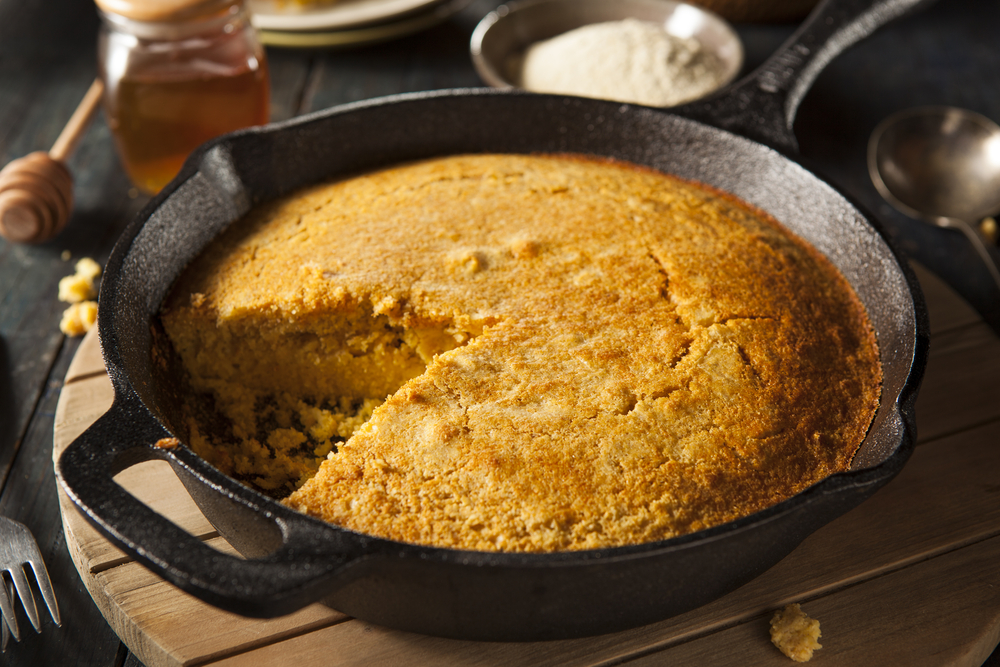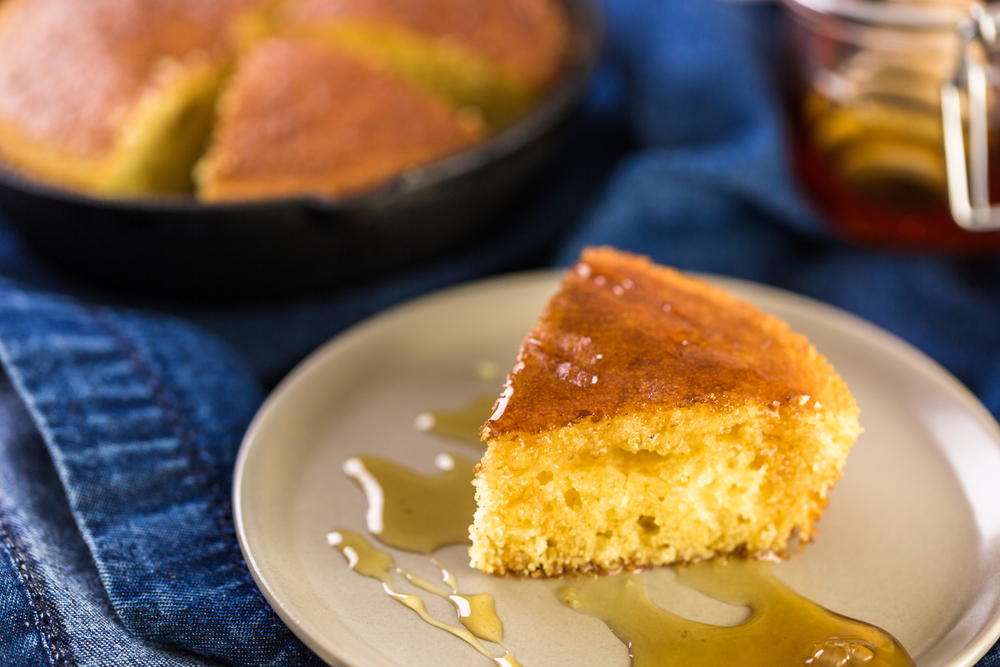Cornbread originated in North America with Native Americans long before the arrival of European settlers. Indians used cornmeal mixed with water and salt to make primitive cornbread. Dependent on the natural resources, colonists arriving in the New World quickly embraced the dish and adapted the recipe to their tastes. Cornbread, which is a type of quick bread typically leavened by baking powder, became increasingly popular during the Civil War because corn was cheap and plentiful. Regional varieties exist today, with the Northern recipes tending to be more cake-like and sweet while Southern versions use smaller amounts of flour and sugar, if any. As a popular dish in Southern cooking, the National Cornbread Festival takes place each year in South Pittsburg, Tennessee.
Recipe Servings: 6
+ 5 minutes resting
Ingredients
- ¼ cup vegetable shortening
- 1½ cups white or yellow cornmeal
- 1 tsp baking soda
- 1 tsp baking powder
- ½ tsp kosher salt
- 1½ cups buttermilk, divided
- 1 large egg, lightly beaten
Directions
- Preheat oven to 425°F and add the vegetable shortening to a 10-inch cast-iron skillet. Put the skillet in the warming oven to heat the skillet and melt the shortening.
- In a large mixing bowl, combine the cornmeal, baking soda, baking powder, and salt. Combine thoroughly.
- Remove the skillet from the oven and pour the melted shortening into the dry ingredients. Stir to combine.
- Add ¾ cup of buttermilk and the egg to the cornmeal mixture. Fold ingredients together without beating the batter. Add additional buttermilk as needed to make a thick batter.
- Pour the batter into the hot skillet. Transfer skillet back to the oven and bake for about 20–25 minutes, until a wooden toothpick inserted in the center comes out clean.
- Remove the skillet from the oven and let rest for 5 minutes.
- Cut the cornbread into wedges and serve warm, or store in an airtight container.
Recipe introduction and directions © Copyright 2016-2025 World Trade Press. All rights reserved.


